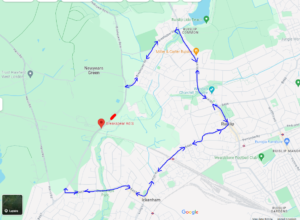 Trafalgar Theatres has U-turned during last-ditch negotiations with Hillingdon Council which aimed to secure a deal for residents for the ongoing management of the Beck Theatre.
Trafalgar Theatres has U-turned during last-ditch negotiations with Hillingdon Council which aimed to secure a deal for residents for the ongoing management of the Beck Theatre.
Until last night (Thursday 10 October), the council had been seeking to negotiate terms with Trafalgar for a three-year contract to continue the Beck Theatre operation without the council making an annual payment to them. These negotiations had continued despite Trafalgar’s unexpected announcement on 15 September to terminate their management arrangement on 13 January 2025.
Since that announcement, the council has sought to work closely with Trafalgar to find terms which would enable them to reconsider their position. Whilst Trafalgar publicly accepted the ending of the annual payment, they also sought compensatory terms beyond the council’s offer of the lease of the Beck on a peppercorn rent with the council continuing to be responsible for essential repairs and maintenance.
Last Friday, terms were discussed that seemed mutually agreeable that would ensure the continuation of the Beck’s operation for a further three-and-a-half years, whilst also discussing longer term investment aspirations for a new theatre in the future. However, late on Tuesday evening (8 October), Trafalgar changed their demands and the deal has subsequently fallen through.
In addition to the rent-free use of the Beck which had already been agreed, Trafalgar were now also asking for a considerable subsidy. They were also seeking the ability to walk away from a three-year deal, with rolling break clauses, despite originally wanting more certainty of continued operation. Fundamentally, this would not have ensured any long-term stability for the running of the facility which is the council’s main priority.
Cllr Ian Edwards, Leader of Hillingdon Council, said: “It was with both surprise and regret that we learned that Trafalgar had again reneged on their position at the last-minute and our agreed terms had fallen through.
“Whilst we know this will be hugely disappointing for the residents and supporters of our Beck Theatre to learn, the council cannot be held to a position which continually moves further away from the demands Trafalgar originally negotiated and which would not secure the longer-term future of the Beck.
“I can assure residents that council officers and elected councillors worked tirelessly to reach an agreement with Trafalgar to secure their continued operation, doing everything reasonably possible to keep the theatre operating and open.
“It was immensely frustrating to hear Trafalgar’s demands changed for a second time and as such, the council can no longer move forward while a commercial entity continues to hold taxpayers to ransom, exploiting public funds when essential services for our residents have to take precedence.”
The council will continue to seek an alternative provider to run the council-owned facility to secure its future and the continued enrichment of our community.

 Hillingdon Council has launched a new campaign to encourage residents to recycle more and further reduce contamination by double-checking items before placing them in their clear bags.
Hillingdon Council has launched a new campaign to encourage residents to recycle more and further reduce contamination by double-checking items before placing them in their clear bags. Please find the latest Open Spaces Society newsletter
Please find the latest Open Spaces Society newsletter  LBH Network Operations Manager has advised that Affinity Water have had to close Breakspear Rd South this afternoon near Grays Cottages (area shown in Red on Map) due to a burst Water Main.
LBH Network Operations Manager has advised that Affinity Water have had to close Breakspear Rd South this afternoon near Grays Cottages (area shown in Red on Map) due to a burst Water Main.